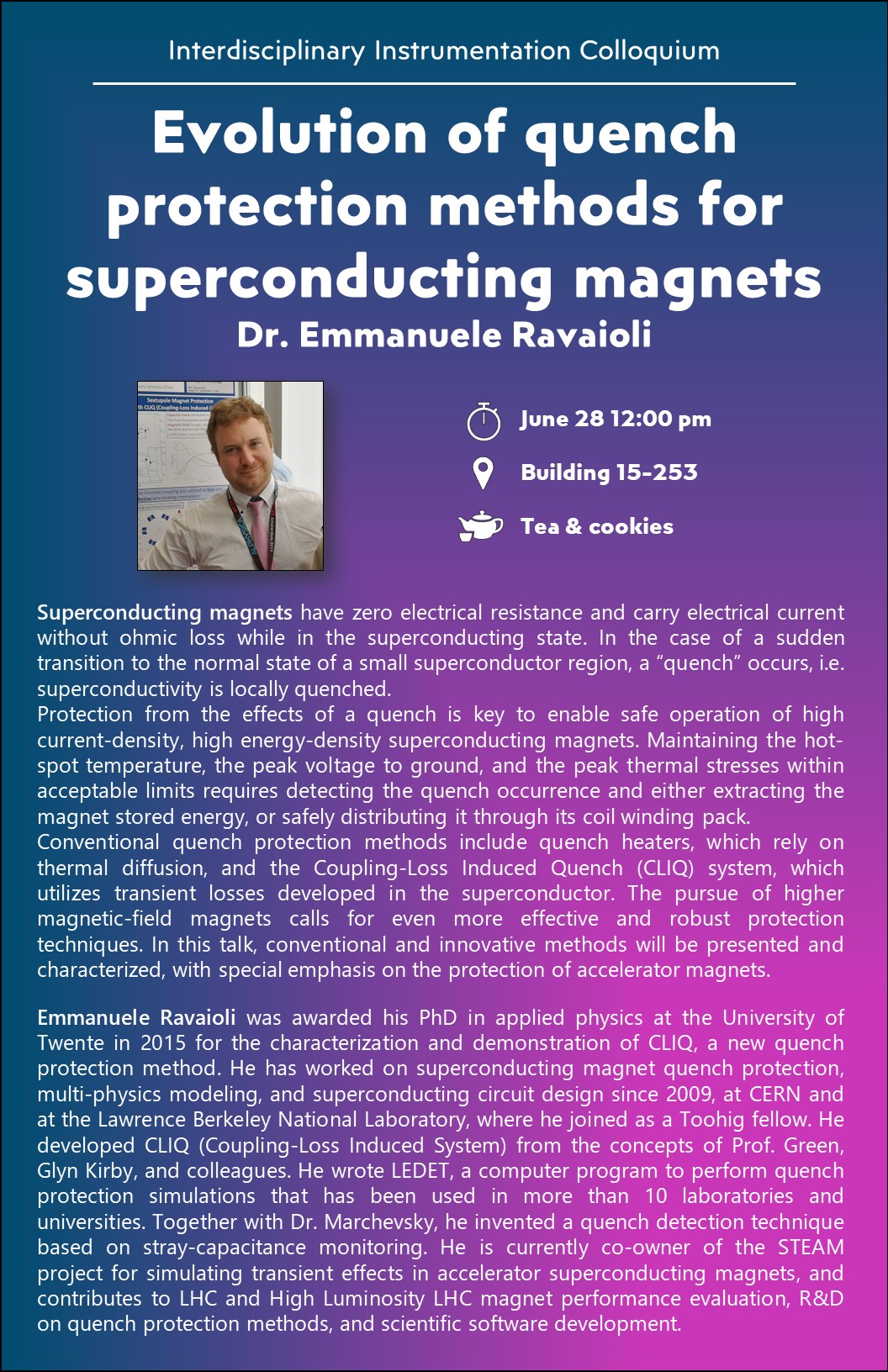Emmanuele Ravaioli, "Evolution of quench protection methods for superconducting magnets"
Auditorium (50)

Abstract
Superconducting magnets have zero electrical resistance and carry electrical current without ohmic loss while in the superconducting state. In the case of a sudden transition to the normal state of a small superconductor region, a “quench” occurs, i.e. superconductivity is locally quenched.
Protection from the effects of a quench is key to enable safe operation of high current-density, high energy-density superconducting magnets. Maintaining the hot-spot temperature, the peak voltage to ground, and the peak thermal stresses within acceptable limits requires detecting the quench occurrence and either extracting the magnet stored energy, or safely distributing it through its coil winding pack.
Conventional quench protection methods include quench heaters, which rely on thermal diffusion, and the Coupling-Loss Induced Quench (CLIQ) system, which utilizes transient losses developed in the superconductor. The pursue of higher magnetic-field magnets calls for even more effective and robust protection techniques. In this talk, conventional and innovative methods will be presented and characterized, with special emphasis on the protection of accelerator magnets.
Speaker Bio:
Emmanuele Ravaioli was awarded his PhD in applied physics at the University of Twente in 2015 for the characterization and demonstration of CLIQ, a new quench protection method. He has worked on superconducting magnet quench protection, multi-physics modeling, and superconducting circuit design since 2009, at CERN and at the Lawrence Berkeley National Laboratory, where he joined as a Toohig fellow. He developed CLIQ (Coupling-Loss Induced System) from the concepts of Prof. Green, Glyn Kirby, and colleagues. He wrote LEDET, a computer program to perform quench protection simulations that has been used in more than 10 laboratories and universities. Together with Dr. Marchevsky, he invented a quench detection technique based on stray-capacitance monitoring. He is currently co-owner of the STEAM project for simulating transient effects in accelerator superconducting magnets, and contributes to LHC and High Luminosity LHC magnet performance evaluation, R&D on quench protection methods, and scientific software development.